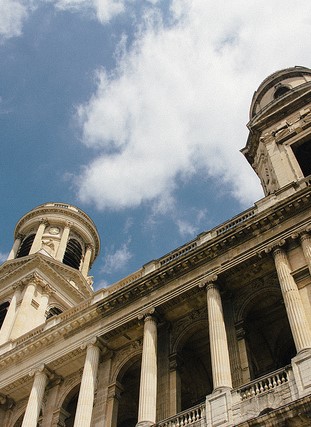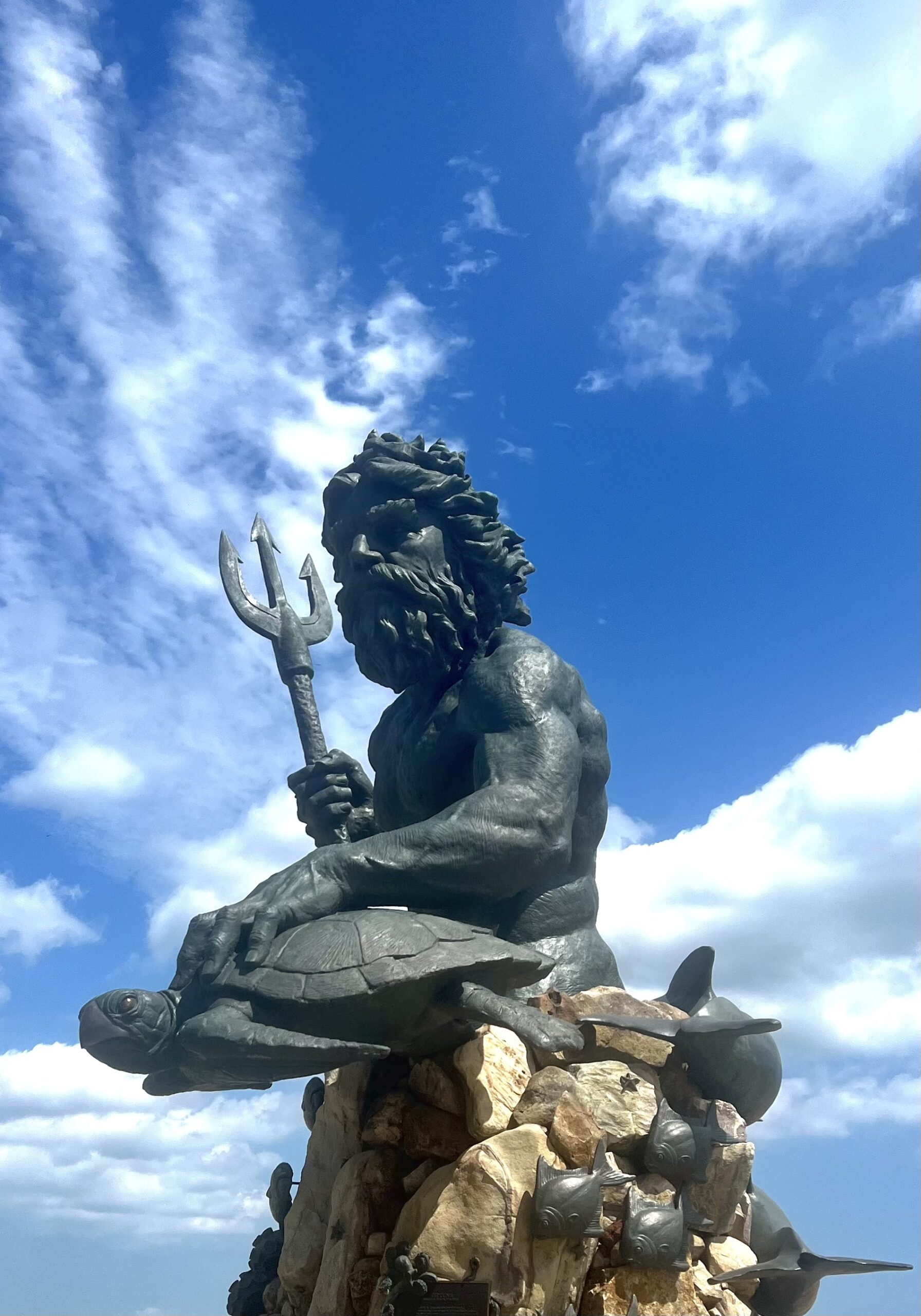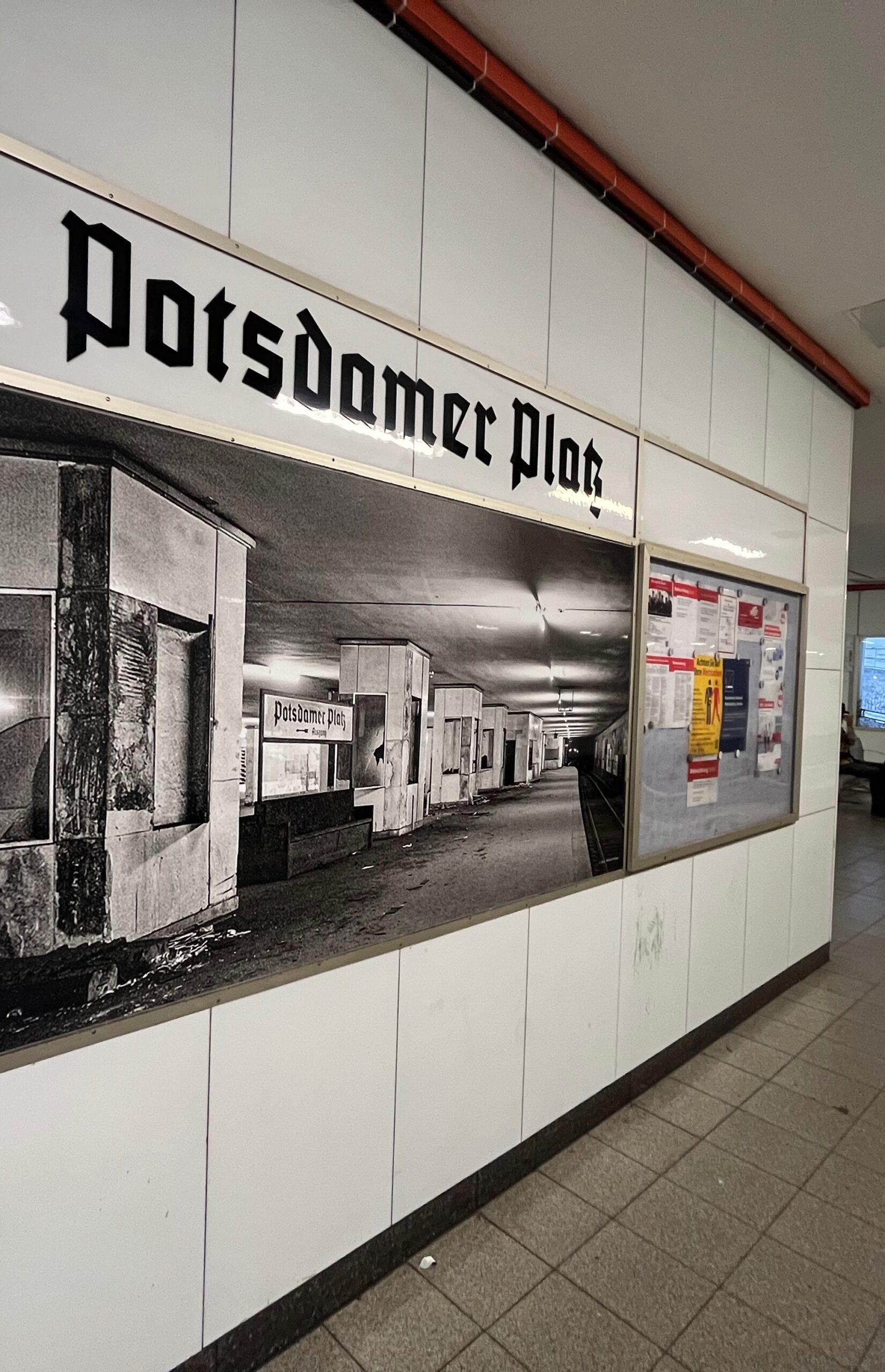
Paris, France
I found a book by Georges Perec called Tentatived’épuisement d’un lieu Parisien, or An Attempt to Exhaust a Place in Paris. I like Perec very much. He loved word games and wrote crossword puzzles, and very often invented challenges for himself in his writing. In 1969 he wrote a book—La Disparition—in which the letter “e” does not appear. It was translated into English, also with no “e’s” but since the literal translation—The Disappearance—has three “e’s”, the English title is A Void. In 1972 Perec wrote Les Revenents, in which “e” is the only vowel in the book. Perec died of cancer in 1982 when he was only forty-six.
Each day from October 18 to October 20, 1974, Perec sat for several hours in the Place St. Sulpice in the 6th Arrondissement of Paris and recorded what he saw. His observations were published in 1975 in the first issue of a review called Cause Commune and then later as Tentative d’épuisement d’un lieu Parisien. In his brief introduction, Perec says that most writing and photography of place seek to illustrate grand events. In this book, however, he says he wanted to describe the “things that are not generally noticed and have no importance: the things that happen when nothing happens, except the weather, the people, the cars, and the clouds.” The resulting book of about forty pages is primarily a list, although an interesting list. But the phrase “things that happen when nothing happens” resonated with me, and I thought I would try to write something like what Perec had written. I thought at first of changing the location. Perhaps I would sit in the Deux Magots but decided that was too filled with tourists. Then I thought of Le Dome at the intersection of the boulevards Raspail and Montparnasse. But there is a major construction project there, which means there is a lot of jackhammer noise and restricted views. In the end, I decided that Perec had been right, that the Place St. Sulpice was the perfect place to watch Paris roll along wave after wave. On Saturday, April 7, 2018, I spent three hours there, beginning at 1:56 pm.
Perhaps I should first explain the Place St. Sulpice. It’s dominated by a huge, hulking church on the east side named St. Sulpice. It’s heavy and solid and will last until the end of time, but it has no grace at all. There are two tall towers on the left and right of its facade. They are of no great distinction except that they are the tallest buildings in the immediate neighborhood. The front of the church has been cleaned, but the rest is grimy and forbidding. In front of the church there is a large plaza made from cobblestones about a yard square. All around there are benches, and in the middle there is a fountain, currently shut off. It has statues on each of its four sides of forgotten Christian public figures whose names—Bossuet, Fénelon, Fléchier, and Massillon—will mean nothing to anyone.
On the south side of the Place is the immense Marie of the 6th Arrondissement surrounded by a fence of thin black spears with gold painted tips. On the west side is a large police station and a meeting hall for the arrondissement. The north side has a kiosk selling magazines and newspapers; a women’s clothing store; Annick Goutal, a parfumerie where the air just in front is filled with musky fragrances; G. Thuiller, a vender of religious objects including santons; a travel agency; and Le Café de La Marie, which is the hub of activity here. In Perec’s day, there were several other cafés, but they are gone now. There is a narrow street—rue des Cannettes—next to the café and across from it is a spacious Yves Saint Laurent store. Next to it is a large, ornate, double door painted blue that leads to what are most likely luxurious apartments above. Then, by the blue door is another woman’s clothing store called “lululemon”; then a lawyer’s office—why do they have to be everywhere?—then another woman’s clothing store whose name I can’t read in my notes; then the exclusive jeweler Vangelden; and then the over the top chocolatier Patrick Roger.
I walked to St. Sulpice from my apartment—a pleasant fifteen minutes or so, some of it through the Luxembourg Gardens—and when I arrived at 1:56 there were blue skies with white clouds, a warm temperature, and only occasional wind. I sat first on a bench by the bus stop. There are many: the 96, the 63, the 87, the 70. Perec carefully records the comings and goings of the buses, using them the way a musician keeps returning to a theme. The buses arrive more or less regularly, every five or six minutes, while the rest of the traffic is random. When Perec finishes his short book with “Le 96. Il est deux heures” (The 96 bus; it’s two pm) it’s like the final drum beat of a jazz solo. But I’m going to leave the buses to Perec. They still continue, regular and unabated. Just think of them arriving and departing every five minutes or so, in the background.
I took a seat on a bench near the bus stop, which on its side had an ad for something called Monkey Shoulder Scotch, which I’ve never heard of. It proclaims itself as the Scotch for mixing. All the buses have ads on their sides for either books in translation by Michael Connelly, who has become a cult figure here—his books are everywhere—or a French author named Laurent Gounelle whose books, just from the ad copy, sound way too saccharine. Meanwhile, at the fountain, about fifteen men and women in their twenties wearing long yellow scarves assemble.
At 2:05 a woman passes on a bicycle. She is also wearing a yellow scarf, but I’m sure she isn’t party of the group at the fountain.
At 2:10 a slender blonde woman, very pretty, wearing all black, sits on the other side of the bench from me. She is talking on her phone. She is carrying a white canvas bag that says, “Hello, I love you. Can you tell me your name?” Still talking on her phone, she stands up and walks on. Meanwhile, a scruffy girl about fourteen stands a little too close to me as I’m writing my notes. I believe she is a pickpocket and shift on the bench so my wallet is away from her. She leaves, perhaps confirming my suspicion.
At 2:15 the group at the fountain with yellow scarves is lined up in front of a conductor. They are going to sing. Near me is a poster for a show at the Olympia called, “Frankly Sinatra.”
A taxi goes by with JUST EAT painted in large letters on both sides.
At 2:25 I cross the street to hear the choir, who are now singing hymns. A mother and her daughter of about seven roll by, each on her own scooter. A young woman with a huge backpack sits next to me on the rim of the fountain. I think about speaking to her, but then she jumps up and waves to a friend across the plaza. A boy of about five runs across the square, careful not to step on any cracks. A woman wearing a worn, pink, quilted vest and house slippers arrives, waving her arms in time to the hymns the choir is singing.
At 2:43 I move to a bench in the shade facing the cafe. Two British women are behind me talking about theatre awards in London. A tall, slender woman, quite attractive, in tight, black, leather pants holding the hand of a girl of about six kisses her man on the lips. A long, lingering kiss. The moment she stops kissing him, he shoves a cigarette into his mouth. This deeply offends me.
At 2:48 the women behind me leave. The choir is still singing. Across the street, in front of the café, an ancient, bent-over man is helped out of a taxi. He leans on his cane as the taxi driver leads him into the store selling religious objects.
I walk around, even go into the church for a while. There are tables where women are selling mementos and place mats. Delacroix painted the walls of one chapel, but even these masterpieces are not enough to overcome the general impression of a large, unorganized, very cold basement. I go back outside.
At 3:17 the choir is still singing. A teenaged girl lies on a bench taking in the sun. An elderly man and woman and, apparently, their only-slightly-less-aged daughter ask the girl if they could also sit on the bench. The girl sits up for a moment, then pops up and stalks off in a huff.
At 3:28 a man in a blue suit, white shirt, and pink tie walks by. Very shiny shoes. He seems out of place, as if he had come from an elegant dinner. Why is he dressed that way on Saturday afternoon? Meanwhile, the café outside is always completely full. As soon as one party leaves a table, others immediately take their place.
At 3:38 a German couple sit on a bench on the square. She takes off one shoe and holds her bare foot in the sunlight.
At 3:37 the choir stops singing and disperses. I wonder how long I would have to wait here before I would see someone I know. It could be a long time or it could be five minutes, but it wouldn’t be forever. Sooner or later someone would come by. I think of Marina Abramović. When she and her lover and artistic partner of many years separated, she started walking from one end of the Great Wall of China and he started walking from the other end. They passed in the middle without saying a word or pausing in the slightest to acknowledge each other.
At 3:45 the German woman and her man are still on the bench. She is about forty, pretty, robust, very Nordic. Her bare foot is still in the sunlight.
April 8, 2018 Sunday
I went to mass at eleven at St. Germain des Pres. The mass at that hour is for families. I liked it, but for a nonbeliever like me it lacked the force of the mass I had attended there on Easter. It was a short walk from the church to St. Sulpice. I arrive at 12:28 and immediately find a table at the Café de la Marie. It is warm. Intense sun, white clouds, and a light wind from the west. Despite the gentle weather, the square is rather empty compared to yesterday. And even though it is Sunday, there is hardly any activity in front of or around the church.
I order a kir and a grilled sandwich, which turns out to be much more than I want to eat, although I eat it all. That takes a while. There is a woman to my right and another woman to the right of her, both slender and pretty and sitting alone. But the one closest to me smokes heavily and listens to music (I suppose) on her iPhone through earbuds. At 1:20 the woman two tables down is suddenly joined by two boys with thick, curly, black hair, one is about thirteen and the other about ten. They are obviously her sons. They all greet each other warmly. She stands up, and they walk away together.
At 1:25 there are more clouds than blue sky. The wind has picked up a little. It blows pods off the branches of the trees and they fall in sudden gusts like snow. On the top floor of a building, on the west side of the square on the rue Bonaparte, there is a row of windows instead of a wall. I’ve been told several times by different people that that is where Catherine Deneuve lives. I wonder if it’s true.
At 1:35 a group of about ten bicyclists fall into line after a leader. He shouts in English, “We only have one rule.” But they disappear down the street and I never hear what the rule is.
At 1:37 a boy of five or six crosses the square pulling a bulky suitcase behind him. Although this is not a popular area for tourists, no one is travelling light. Everyone has a suitcase, a backpack, a heavy purse, or a big sack from a store, and sometimes two or even three. What is it that all these people think they need to be prepared for?
At 1:51 I pay my bill and move from the café to a bench on the plaza.
At 1:53 a tow truck arrives to take away a black Renault. A man and his teenaged son stand by disconsolately. Near them on the sidewalk there are five or six pieces of luggage. The father, who has a halo of black hair around a huge bald spot, negotiates with the tow truck driver while the son sits on the luggage talking on his phone. The tow truck leaves at 2:01.
At 2:05 I see two pigeons on the ground in front of me engaged in a mating dance. It’s the second or third time I’ve seen this during these two days. No wonder there are so many pigeons.
At 2:14 a girl of about six feeds bread crumbs to pigeons. Sixty or seventy of them arrive in an instant.
At 2:16 the boy takes three of the bags and trudges off to the east.
At 2:22 the boy returns empty handed. He and his father hoist the rest of the luggage and slowly disappear to the east. I decide to move on myself.
Gregory Curtis lives in Austin, Texas. After a long career in magazines he has published two books of art history. He is currently working on a book about writers from Texas.
Photo by Flickr Creative Commons user Elwin van Eede




